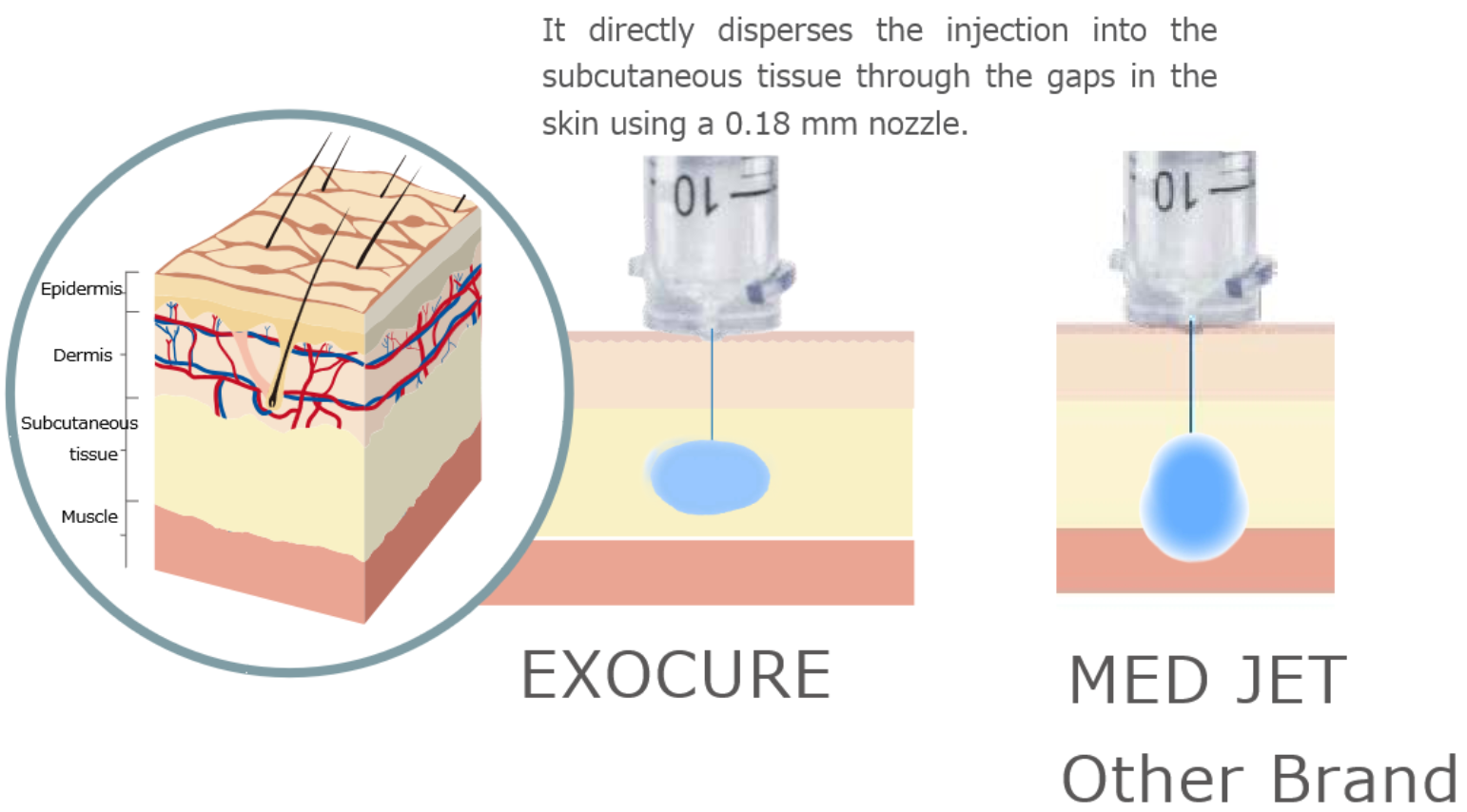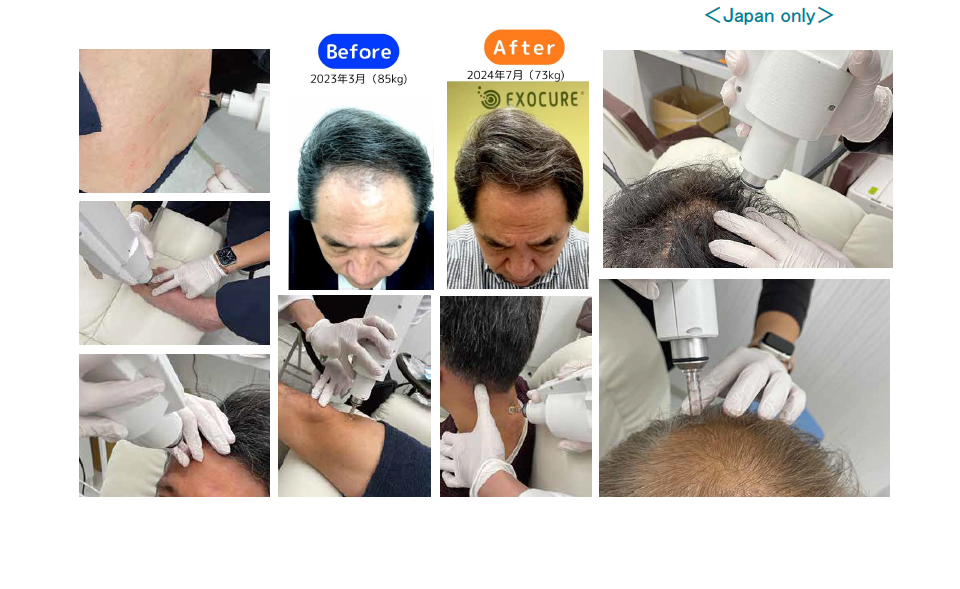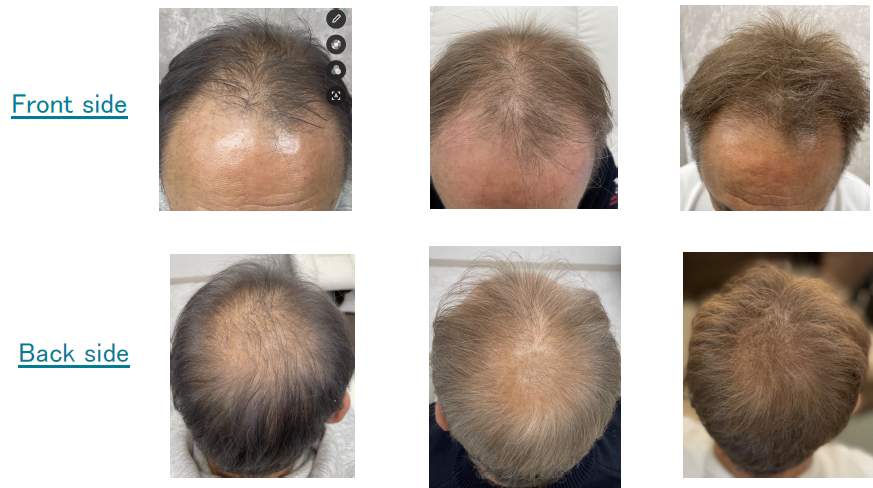
Since there is no needle, there is no "pain" or "fear" associated with it, and there is no risk of needlestick accidents.
Many people have an aversion to injections. The most common reason for this is the "pain when the injection needle is inserted" (50.6%). followed by "discomfort with the act of having a needle inserted into the body itself" (30.3%), "discomfort with seeing blood" (8.2%), and "discomfort with the injection needle itself (5.8%). [*1]
There are cases where the image of being pierced by an injection needle can intensify fear, leading to a strong sense of fear and anxiety towards injections that individuals themselves may not understand. Some individuals may have a specific phobia called "needle phobia" related to injections.
*1 Consciousness survey on Injections conducted by Alshare Co. Ltd.


Achieve "painless" and "peace of mind" without injection needles!
It is a mechanism that uses high pressure and high-speed jet flow generated by the force of a spring through a nozzle with a diameter of 0.18 millimeters to directly diffuse and inject medication into the skin, eliminating the need for traditional syringe needles. By the way, the pain from injections can be caused not only by the pain of the needle insertion but also by the pressure of drug infiltration and the pH of the medication.
Since it is disposable, it eliminates the risk of "infection" and "accidents".
The use of disposable ampoules not only prevents infection but also fundamentally solves the risk of needlestick injuries. Moreover, thanks to research and development, the strength of ampoules, which were once considered fragile, has been increased, ensuring they do not break.
It can be disposed of as household waste!
Traditional syringes, as part of home medical waste, required proper disposal at medical institutions like hospitals or pharmacies to prevent needlestick injuries. The used ampoules from "Injex50," being needle-free, can be disposed of as "household plastic waste."

Treatment scenario using the
needle-free jet injection 16-consecutive administraion system
"EXO-JET"


64 years old (male)
From February 2024 to July 2024
(EXO-JET16 treatment with a needle-free pain-free system)


Premier research equipment
The E-GIC HANEDA facility is focused on advancing exosome research. Within the facility, there is a laboratory that has established a GMP-compliant Cell Processing Facility (CPF). The CPF is designed to investigate the efficacy and safety of new medical technologies and treatments that are developed through the research conducted at the facility. Furthermore, the facility also houses a member-based clinic that can carry out clinical research to work towards the practical application of the research outcomes.

Dental pulp
The source of cells is dental pulp stem cells collected from the deciduous teeth of children(5-12 years old), which are suitable for preemptive self-repairing medicine in every aspects, with a traceable collection route and without disease history problems.

Science Advisor
Professor Takahiro Ochiya of the Medical Research Institute at Tokyo Medical University has been ranked #1 in the world for extracellular vesicle (exosome) research by two independent. organizations, ExpertScape and Scholar GPS.
Professor Ochiya, from the Division of Molecular and Cellular Therapy at the Future Medicine Research Center of the Medical Research Institute at Tokyo Medical University (President: Yukiko Hayashi), has been ranked #1 globally in the researcher rankings for extracellular vesicle (exosome) research by both the ExpertScape and Scholar GPS organizations. Additionally, Lecturer Yusuke Yoshioka from the same division has been ranked 5th and 13th respectively.
While there are various methods used to objectively quantify researchers' achievements, Professor Ochiya has been selected as one of the top 0.1% of researchers worldwide in Clarivate Analytics' Highly Cited Researchers (HCR) list for 5 consecutive years since 2019. These evaluations reflect the globally recognized excellence of Tokyo Medical University's research achievements in the field of extracellular vesicles. Going forward, our university will continue to pursue exosome research as part of our efforts to develop patient-friendly (minimally invasive) medical treatments.